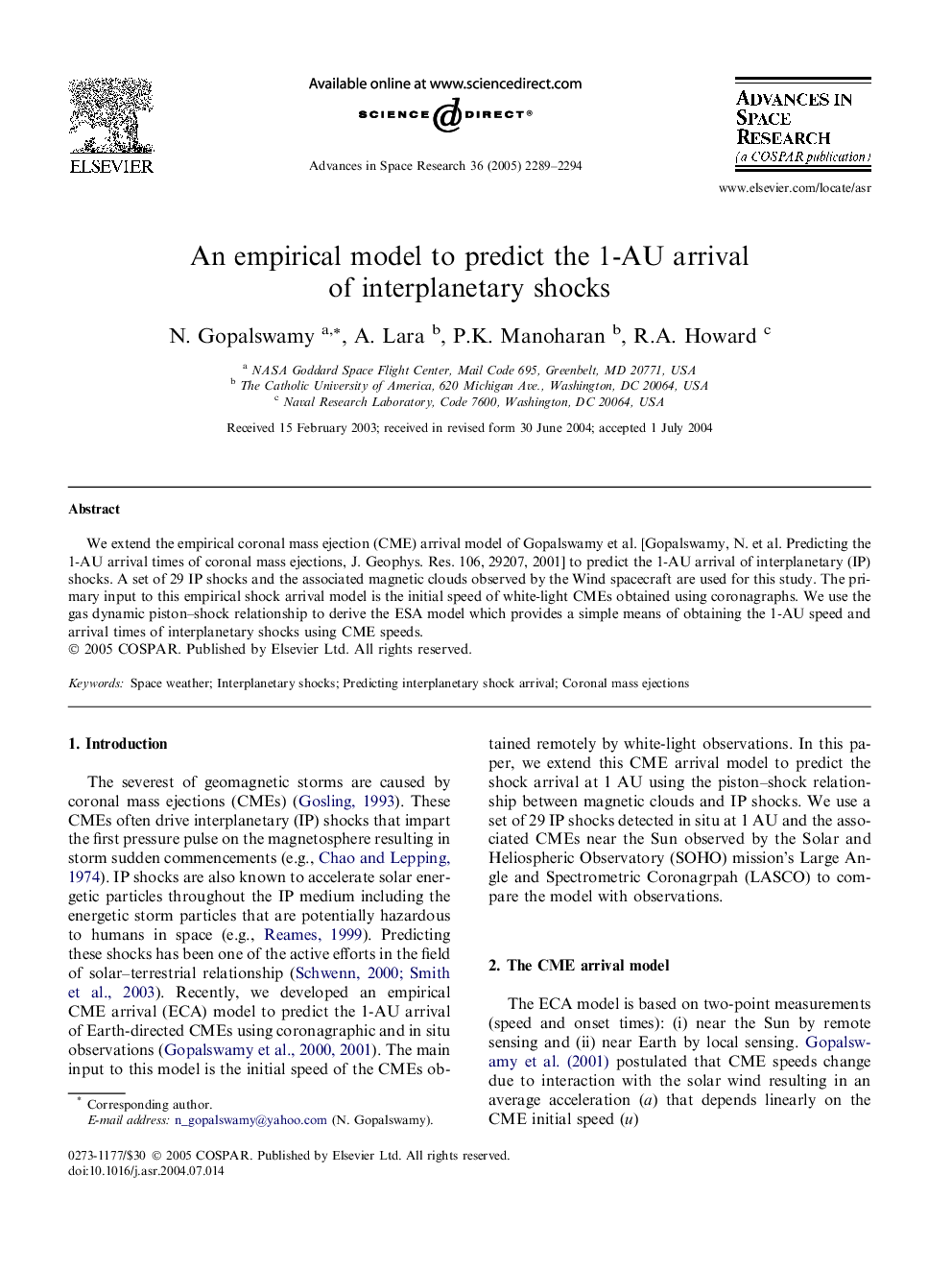| Article ID | Journal | Published Year | Pages | File Type |
|---|---|---|---|---|
| 1768645 | Advances in Space Research | 2005 | 6 Pages |
Abstract
We extend the empirical coronal mass ejection (CME) arrival model of Gopalswamy et al. [Gopalswamy, N. et al. Predicting the 1-AU arrival times of coronal mass ejections, J. Geophys. Res. 106, 29207, 2001] to predict the 1-AU arrival of interplanetary (IP) shocks. A set of 29 IP shocks and the associated magnetic clouds observed by the Wind spacecraft are used for this study. The primary input to this empirical shock arrival model is the initial speed of white-light CMEs obtained using coronagraphs. We use the gas dynamic piston–shock relationship to derive the ESA model which provides a simple means of obtaining the 1-AU speed and arrival times of interplanetary shocks using CME speeds.
Related Topics
Physical Sciences and Engineering
Earth and Planetary Sciences
Space and Planetary Science
Authors
N. Gopalswamy, A. Lara, P.K. Manoharan, R.A. Howard,
